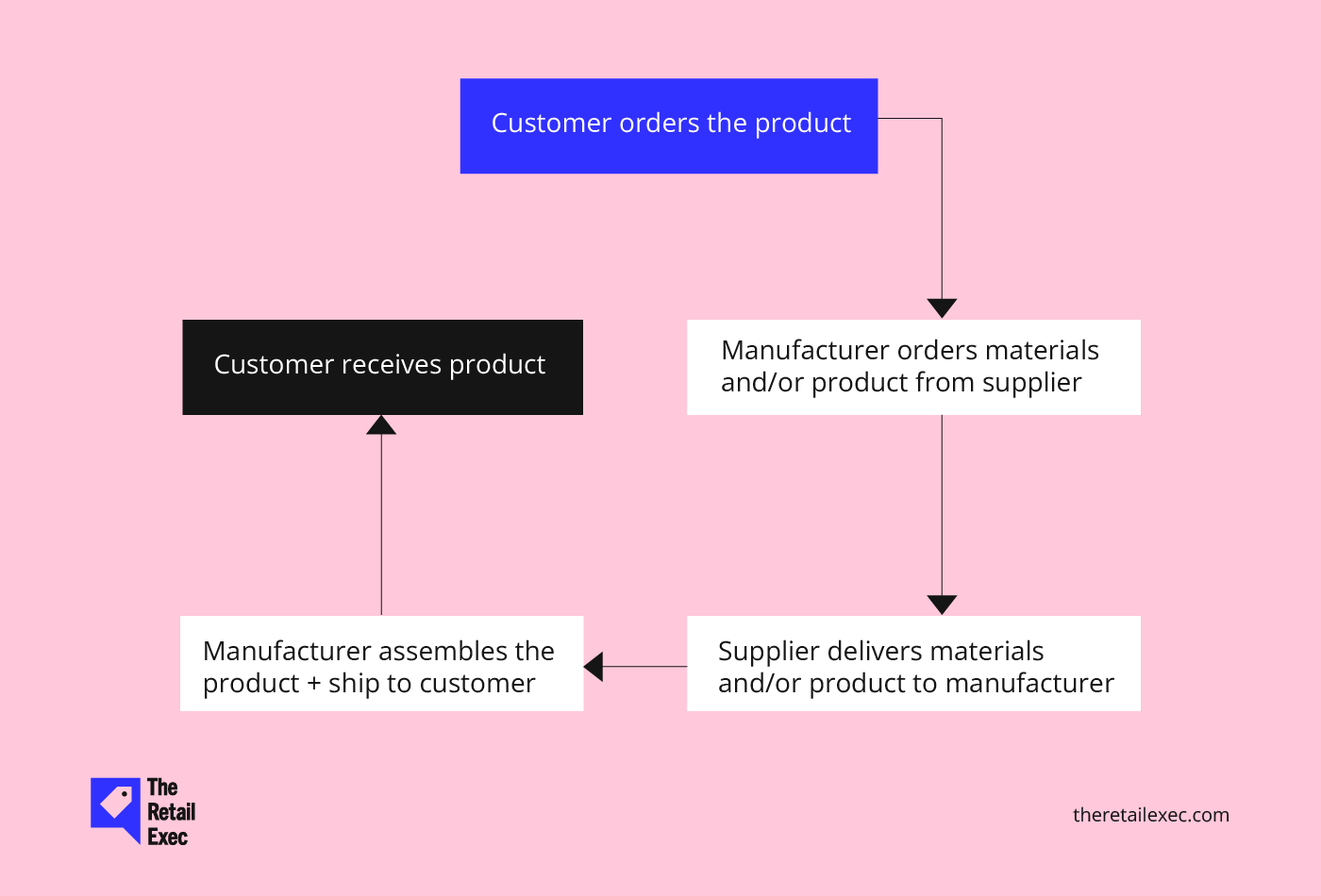JIT—Inventory's Dance Partner: Just-in-time (JIT) inventory management means ordering materials only when needed, reducing holding costs and allowing flexibility in adapting to customer demand fluctuations.
Nimble as a Ninja: Implementing JIT successfully can enhance cash flow and decrease storage expenditures, giving businesses the agility to handle sudden demand increases smoothly.
Walking the Tightrope: While JIT can be beneficial, a misstep could result in supply chain disruptions, leading to dissatisfied customers and potential operational crises.
The Essentials of JIT: For JIT to work, businesses must evaluate their operational capabilities and ensure they can meet the demands of JIT's just-in-time principles efficiently.
JIT—Bliss or Headache?: Determining whether JIT is suitable involves weighing potential benefits against logistical challenges, ensuring it aligns with a business's inventory and demand management strategies.
Holding tons of inventory might feel like wearing sweatpants at Thanksgiving—comfy at first, but soon you're regretting your choices.
Enter just-in-time (JIT) inventory, the lean strategy of ordering stock exactly when you need it, no sooner, no later.
Done right, JIT can boost cash flow, slash storage costs, and make you nimble enough to dance around demand spikes. Done wrong, you're one supply hiccup away from angry customers and existential dread.
In this guide, we'll break down how JIT actually works, the critical boxes your business needs to tick before diving in, and whether it's your ticket to inventory bliss—or a logistical headache waiting to happen.
What is Just-in-Time (JIT) Inventory?
Just-in-time (JIT) inventory management is the practice of purchasing materials on an as-needed basis.
So, customer orders are the trigger to purchase raw materials.
Organizations can keep a lean inventory and remain flexible in responding to peaks and valleys in customer demand without incurring unnecessary holding costs.
For companies who want to reduce working capital and increase the efficiency of their production line, JIT represents an opportunity to become more flexible and responsive to market trends, with far less up-front investment than traditional inventory models.
It’s a pull system that prioritizes current demand to avoid the pitfalls of excess inventory.
To put it in simple terms, JIT inventory management is like cooking a meal by buying ingredients only when you're ready to cook, ensuring freshness and avoiding unnecessary storage or waste.
History of JIT
Japanese car manufacturer Toyota is widely considered to have pioneered this method.
In the 1970s, Toyota responded to mounting market competition by completely re-imagining its production process with lean manufacturing principles and only purchasing parts when new orders came in.
For this reason, JIT is sometimes referred to as the Toyota Production System.

For this revolutionary, just-in-time system to work, Toyota had to enlist buy-in from everyone in the organization and ensure that it organized every facet of the production process to support JIT manufacturing.
Communication became a priority along the assembly line, and teams committed to continuous improvement in response to feedback.
It took Toyota nearly 20 years to perfect JIT, and they’ve maintained this philosophy ever since.
If we explore just-in-time inventory management within the context of Toyota, it would look something like this:
Rather than purchasing thousands of airbags and then paying warehousing fees to store them until needed, Toyota would wait until they receive customer orders for new cars and then purchase the airbags necessary to fulfill those orders.
The Kanban method
Often associated with JIT inventory management is the Kanban method. The word “Kanban” is Japanese for “visual board” or “sign.”
When Toyota first launched its JIT strategy, they helped teams visualize the supply chain and lean manufacturing process by creating a wooden board that divided activities into three columns: Requested, In-Progress, and Done.
Cards communicating progress would be passed along the assembly line and hung on the board as activities progressed from one stage to the next.

Since then, the Kanban method has become common practice within the Lean and Agile communities.
Today, while some teams continue to find it helpful to have a physical Kanban board in their office, most teams prefer a shared virtual board to enhance collaboration between remote team members.
How Does Just-in-Time Inventory Work?
The handy flowchart below illustrates how the JIT inventory system works. The production cycle begins when a customer places a product order.
From there, the manufacturer orders the necessary raw materials (or products) from their supplier. The supplier fulfills the order and sends it to the manufacturer. The manufacturer then begins assembling the order on the production line.
Once complete, the product is shipped to the customer, and the cycle can start again.

Criteria for Implementing JIT
Before you jump head-first into just-in-time inventory, take a quick reality check. Here's what you absolutely need locked down first:
- Supplier reliability. If your suppliers treat deadlines like loose suggestions, JIT will be a nightmare. You need rock-solid vendors who deliver consistently.
- Demand forecasting accuracy. Without reliable forecasting, JIT turns into "just-in-panic" pretty fast. You’ll want clear data to anticipate demand accurately.
- Short lead times. Long waits between order and delivery defeat the entire purpose of JIT. Aim to keep your supply windows tight and dependable.
- Tech readiness. Spreadsheets won't cut it here. Invest in inventory software that gives real-time visibility or risk inventory chaos.
Ticked these boxes? Great—you're ready to reap some serious JIT rewards.
Benefits of Just-in-Time Inventory Management
Just-in-time is the opposite of just-in-case manufacturing, in which companies choose to bulk up on storage so they have it on hand in the event of a surge in sales.
There are several benefits to adopting a just-in-time approach, primarily the avoidance of overproduction, reduction of storage costs, improved cycle times, and having a line of sight that results in continuous improvement.
Let’s take a closer look at a few of the main benefits of JIT manufacturing.
1. Eliminates overproduction
When companies overproduce, excess inventory sits dormant while the company continues to pay to house it.
This dead stock takes up warehouse space that in-demand products could better utilize.
In a JIT production scenario, raw materials are ordered when customers place orders for new products.
This helps companies avoid an imbalance in which the product supply exceeds demand.
While JIT effectively eliminates overproduction, integrating inventory management software can further streamline this process.
Explore the comprehensive benefits of inventory management software to understand how it can complement JIT strategies.
2. Decreases storage cost
Imagine a scenario in which Company A employs a just-in-case strategy, producing a bulk number of widgets in anticipation of market demand.
While awaiting these sales, all the widgets must be stored, costing a fortune.
Now imagine Company B adopting a just-in-time inventory strategy. They build their widgets as customers order them.
Once a widget is sold, it spends very little time on the shelf before being sent to the customer, freeing up space for the next widget off the assembly line. In this way, JIT optimizes inventory levels and saves money.
I recall a quarter where our estimated needs led to an overstock of 10,000 units of multivitamins—capital tied up in unsold goods. The switch to JIT was our response.
It was painstaking but necessary, and by quarter’s end, our financials reflected the change—a 20% cut in inventory holding costs. That number was a milestone, the mark of a leaner, more adaptable operation.
It’s not a silver bullet—there were moments of tension when supply hiccups arose—but it taught us to be a more agile and responsive business in the health supplement market.
3. Flexible and adaptive to market needs
Within the just-in-time model, manufacturers can easily adapt to changes in the market, pulling back on the production of certain products as sales wane and beefing up the production of others as sales improve.
The visibility of the entire supply chain and real-time data that JIT provides empowers manufacturers with greater control over the production process.
It allows them space and freedom to respond to ever-changing customer demands.
4. Buying local
Not only is just-in-time beneficial for the manufacturer, but it’s also beneficial for the environment and the communities within which the manufacturer operates.
Since JIT requires that materials are purchased on an as-needed basis, ease and speed of delivery are key to the strategy's success.
For this reason, it makes the most sense for manufacturers to purchase goods from local providers.
By buying locally, the manufacturer receives their materials faster, reduces their carbon footprint, and nurtures the local economy by supporting businesses that create local jobs.
5. Improving cash flow
By ordering materials as needed, manufacturers reduce the working capital necessary to keep the business running smoothly.
Rather than investing heavily up-front in a massive amount of safety stock, JIT production purchases materials once an order comes in.
Return on investment is higher because there isn’t any overstock hanging out in the warehouse waiting to be sold.
We switched to JIT because it enables us to only order when we need to, so we save time, space, and money. The process improves our profit margin because we no longer need so much space to keep stock that we may or may not need right away.
6. Helps with budgeting
In the realm of budgeting, the just-in-time inventory system proves advantageous.
It allows for a more dynamic allocation of resources, as funds are not tied up in excessive amounts of inventory.
This approach aligns with on-demand consumer trends, ensuring that products are available when needed, thus elevating customer satisfaction.
7. Small business friendly strategy
For small businesses, the just-in-time inventory system can be a game-changer.
It allows them to compete more effectively by reducing overhead costs and focusing resources on immediate production and sales needs.
While requiring careful management, this methodology can lead to improved supply chain efficiency and better alignment with market demands.
Pros & Cons of Just-in-Time Inventory
Just-in-time manufacturing can decrease working capital, reduce carbon footprint, and shrink inventory costs by optimizing the production schedule.
That being said, like all strategies, it does have its shortcomings. Let’s take a look at some of the pros and cons of JIT.
| Pros | Cons |
|---|---|
| Eliminates overproduction | Vulnerable to supply chain disruptions |
| Reduces storage costs | Dependent on reliable suppliers and communication |
| Flexible and adaptive to market demands | Risk of low inventory |
| Increases cash flow and reduces working capital | Potential delays in customer delivery |
| Environmentally friendly and supports local economies | Requires accurate demand forecasting |
| Enhances organizational communication | Investment in technology |
| Helps with budgeting | Limited flexibility for experimentation |
| Enhances supplier relationships | |
| Increases product quality | |
| Encourages continuous improvement |
Pros of JIT inventory
Just-in-time is a lean manufacturing strategy that can help manufacturers avoid many of the most common pitfalls and economic risks associated with production-based business.
Primarily, JIT works to ensure that manufacturers are not carrying unnecessary inventory costs by housing finished products that have not yet been sold.
JIT avoids overproduction because products are only assembled when a customer places an order.
- Eliminates overproduction. Only produce what is ordered, reducing excess inventory.
- Reduces storage costs. Less need for warehousing due to minimal inventory.
- Flexible and adaptive to market demands. Can quickly adjust production according to consumer demand.
- Increases cash flow and reduces working capital. Money is not tied up in unsold inventory.
- Environmentally friendly and supports local economies. Encourages purchasing from local suppliers, reducing carbon footprint.
- Enhances organizational communication. Requires tight coordination and communication within the company.
- Helps with budgeting. More dynamic allocation of resources without excess inventory.
- Enhances supplier relationships. Leads to stronger partnerships due to the need for reliable deliveries.
- Increases product quality. Focus on current orders allows for more investment in quality control.
- Encourages continuous improvement. Fosters ongoing optimization and efficiency in production processes.
Cons of JIT inventory
This inventory management strategy is not without its challenges.
Supply chain disruptions, such as those caused by a natural disaster, can lead to stockouts, directly impacting retailers who rely on a streamlined supply chain for their inventory needs.
The JIT model demands a robust and responsive supply chain management system to mitigate these risks.
For just-in-time inventory management to succeed, manufacturers must have steady, high-quality production, reliable machinery, and suppliers who can be counted on to deliver orders on time.
This way, JIT is vulnerable to factors like machinery breakdowns and supply chain shortages.
When a manufacturer encounters a disruption in the production process, work-in-process goods can stall out part way through, resulting in a backlog.
Since these affected items aren’t finished products and can’t be sold, they incur not only the costs associated with their materials but also the storage costs associated with housing them until production can resume.
This was never more clear than during the early days of the pandemic.
As lockdown restrictions placed regulations on travel and in-person contact, shipments experienced crushing delays. Manufacturers were stuck with an excess of customer orders but unable to fulfill them within a reasonable timeline.
Let's look at each con in more detail:
- Vulnerable to supply chain disruptions. A slight delay can cause stockouts and impact delivery.
- Dependent on reliable suppliers and communication. Requires a robust supply chain management system.
- Risk of low inventory. May lead to issues if demand spikes unexpectedly.
- Potential delays in customer delivery. Production only starts after orders are placed, which may extend delivery times.
- Requires accurate demand forecasting. Inaccurate predictions can lead to stockouts or inefficient production.
- Investment in technology. Effective JIT implementation often necessitates advanced inventory and SCM software.
- Limited flexibility for experimentation. Less room for creating surplus inventory for testing or promotions.
Implementation was not as easy as we had hoped.
With JIT, you keep the raw material for a few hours, which means they get replenished, and a new truck has to arrive to continue with production.
Since Fortador has hundreds of components we need to source, with a slight delay, we risk production stopping.
While weighing the pros and cons of JIT, it's equally vital to explore the complex challenges of inventory management that can impact your overall strategy.
Support your just-in-time inventory strategy with continuous tracking—discover how a perpetual inventory approach helps maintain lean operations.
Industries and Companies Using JIT
Just-in-time isn't theoretical—these industry giants use it daily to run tighter operations and healthier balance sheets:
- Toyota (automotive). Increased inventory turnover by 60% after pioneering JIT, basically writing the playbook on lean manufacturing.
- Dell (tech manufacturing). Keeps just a few hours’ worth of parts on hand, cutting storage costs and staying insanely agile.
- Zara (fashion retail). Uses JIT to respond lightning-fast to fashion trends, restocking stores with new designs in just weeks rather than months.
- Starbucks (food & beverage). Optimizes fresh ingredient deliveries across locations, keeping waste minimal and freshness maximal.
If these giants can master the JIT dance, chances are there's something in it for your operation, too.
How to Set Up Just-in-Time Inventory (Without Tanking Your Ops)
Just-in-time can radically improve efficiency—but only if your operation is built to handle the pressure. No buffers. No room for error. Here's how to build a system that won’t buckle the second something goes sideways.
1. Audit your current inventory and supply chain
Before you cut the fat, you’ve got to find it.
Pull reports, walk the warehouse, and talk to your ops team. Where are things piling up? Where are you guessing instead of knowing?
Don’t just look at inventory levels—trace the full journey from order to delivery and map out the pain points. It’s less about tidying up and more about spotting where your processes can’t handle unpredictability.
2. Build strong supplier relationships
JIT turns your suppliers into extensions of your business. If they miss, you miss.
Now’s the time to have honest conversations about:
- How much lead time they really need
- What kind of notice they require for changes
- How responsive they are when the unexpected hits
JIT will expose every weak link in your supply chain. Your supplier relationships need to be stronger than your contracts.
Literally every ops manager who’s lived through a JIT crisis
Also, line up backups. Always have a Plan B vendor in your back pocket.
3. Get accurate demand forecasts in place
No forecast is perfect—but if yours is consistently off by 20%, you’re flying blind. JIT depends on knowing what’s coming before it arrives.
Use a blend of:
- Historical data
- Real-time sales trends
- External signals (seasonality, market shifts, etc.)
And revisit it often. A stale forecast is just a spreadsheet of broken promises.
4. Choose the right inventory management software
Let’s not sugarcoat this: running JIT on spreadsheets is asking for a breakdown.
You need real-time stock visibility, low-inventory alerts, demand forecasting, supplier integrations, and automation you can trust.
Here are 10 inventory management platforms that can actually support your JIT operations:
And, if you're a big brand looking for something that fits your scale, here are the top enterprise inventory management solutions:
5. Standardize and streamline internal workflows
Think of your processes like a relay race: the smoother the handoffs, the faster you go. In a JIT world, every hiccup gets amplified—so now’s the time to:
- Cut unnecessary steps
- Eliminate handoffs that don’t add value
- Shorten setup/changeover times in production
If someone’s holding a clipboard and checking paper forms, you’ve found a bottleneck.
6. Train your team to think in flow, not stock
JIT isn’t just a system—it’s a culture shift. Teams used to working with buffers and backstock need to learn to operate without a safety net.
Try this instead of a boring training session:
- Shadow a high-performing JIT team
- Run simulation scenarios
- Hold a “what could go wrong?” war room with every department
Build shared ownership of the process, and people will start spotting issues before they become disasters.
7. Pilot before scaling
Don’t launch JIT company-wide just because the CFO read a case study.
Pick one SKU, one region, or one location and run it like a test kitchen. Document everything.
You’re not just looking for technical issues—you’re validating whether your people, systems, and suppliers can handle the tempo.
8. Track, analyze, adjust, repeat
Once it’s live, JIT is like tuning a race car: always in motion. Watch for:
- Recurring delays
- Supplier underperformance
- Forecast errors
- Internal slowdowns
Set a cadence for reviewing KPIs and course-correct fast. The goal isn’t perfection—it’s constant momentum toward leaner, faster, smarter.
8 Steps For Continuous Improvement Using JIT
The JIT method is based on the principle of continuous improvement.
Since JIT prioritizes flexibility, it allows organizations to adjust for efficiency and efficacy throughout the production process.
Asking the right questions and creating new solutions to answer them in real-time is essential to just-in-time inventory management.
- How can your JIT strategy improve cycle times?
- Where are the communication gaps?
- How can raw materials be procured faster and with less red tape?
When implementing the strategy, consider following these eight steps for continuous improvement.
1. Review current processes and identify areas for improvement
Begin by reviewing your current processes.
This may include manufacturing planning, personnel deployment, product design, and process design.
Gain a thorough understanding of how your organization is currently managing production to identify where you can become more flexible and efficient and avoid disruptions.
2. Define roles and responsibilities
Consider conducting a Total Quality Management (TQM) review in which you clearly define the roles and responsibilities of your team members, establish load and capacity schedules, and determine how you’ll measure quality control.
3. Implement Kanban
Take a look at your lot size policies and consider whether they’re currently at optimal levels.
Design a Kanban process or pull system in which production and withdrawal can be communicated to influence the assembly line.
4. Nurture relationships
Choose your preferred suppliers and open the lines of communication to discuss items like contract negotiation, order lead times, expectations for delivery, and other relevant metrics.
Nurture these relationships so that you’ll have an established contact with whom you can communicate openly in the event of a challenge.
5. Explore the details
At this point in the process, utilize the information you’ve gathered to fine-tune the details further.
Take a look at your policies, inventory needs, and controls and see where you can tweak them to maximize efficiency.
6. Educate the team
JIT won’t work without buy-in from the team.
Make sure that everyone is on the same page by conducting education sessions. Explain the benefits of the JIT system and ensure that every single team member understands how their role factors into the overall strategy.
7. Refine your processes
Now take a look at your JIT strategy overall.
Are there areas where you can reduce the number of steps in a process? Where can you standardize and automate?
Notice how, throughout these eight steps, there are multiple opportunities to further review, refine, and improve.
This is the heart of a continuous improvement approach.
8. Assess problems and identify trends
In the real world, problems pop up all the time.
When they do, conduct a root cause analysis. Determine where quality control can assist throughout the production process to avoid a similar problem in the future.
Track trends along the way, and frequently loop back to consider how and where these trends could influence your strategy to create further improvements.
Is JIT Inventory Management For You?
Just-in-time (JIT) inventory management is a strategic methodology increasingly adopted by retailers and small businesses to enhance their supply chain management.
This inventory management method revolves around maintaining less inventory, aligning closely with consumer demand to optimize order fulfillment and inventory control.
By adopting the JIT model, brands can significantly reduce storage space requirements and associated costs, positively impacting their bottom line.
This method offers a practical solution for both enterprise retailers and small businesses.
By focusing on keeping less inventory and responding swiftly to consumer demand, brands can improve their order fulfillment process, enhance customer satisfaction, and maintain a healthier bottom line.
Yet, it isn't without its perils, and brands must keep a cautious eye on potential supply chain disruptions.
Whether it's best for you is ultimately up to you. Hopefully, we've shined some light on this decision!
To stay up-to-date on the latest industry trends in ecommerce, don’t forget to subscribe to our newsletter to get the latest insights for ecommerce leaders.
Just In Time Inventory FAQs
Let’s answer a few lingering questions about JIT inventory before you move along.
What are the key techniques used in JIT inventory management?
JIT relies on a few core tactics to stay lean and efficient:
-
Pull systems. You only order or produce what’s needed, based on real demand—not guesses.
-
Kanban scheduling. Cards or digital boards show the flow of work and signal when to restock or reorder.
-
Reduced setup times. Equipment and teams are prepped to switch tasks fast without wasting time or materials.
-
Supplier integration. Your suppliers aren’t just vendors—they’re practically coworkers. You’ll need tight coordination to make this work.
How does just-in-time inventory affect a company's costs?
Done right, it cuts storage costs, frees up working capital, and boosts cash flow. But it’s not all gravy—you might pay more for faster shipping, supplier coordination, and software that keeps everything running smoothly.
Think fewer warehouses, but smarter systems.
What makes JIT risky?
One hiccup in your supply chain can bring the whole operation to a halt. If a truck breaks down, a part gets delayed, or a supplier goes offline, you’ve got no backup stock to fall back on.
JIT saves money, but it trades buffer for speed—so you’d better have a backup plan for your backup plan.
How does JIT differ from traditional inventory methods?
Traditional inventory = stockpiling “just in case.”
JIT = ordering “just in time.”
Instead of keeping shelves full in anticipation of demand, JIT reacts to real-time needs. It’s leaner, faster, and way more cost-efficient—but less forgiving when things go wrong.
Is just-in-time inventory good for small businesses?
It can be a game-changer—if your suppliers are reliable, your forecasts are solid, and you’re not stuck waiting on international shipments. JIT helps small businesses stay lean and responsive, but if you don’t have the infrastructure in place, it can be a dangerous bet.
What software supports just-in-time inventory?
You’ll need inventory management software with real-time tracking, low-stock alerts, demand forecasting, and (ideally) supplier integration. Tools like Katana, NetSuite, and inFlow are built to support lean ops. Spreadsheets alone won’t cut it.
What’s the difference between JIT and lean manufacturing?
JIT is one piece of the lean manufacturing puzzle. Lean is the big-picture philosophy of cutting waste in all its forms—time, materials, energy, motion. JIT focuses specifically on timing inventory to reduce excess stock.
So all JIT is lean, but not all lean is JIT.




